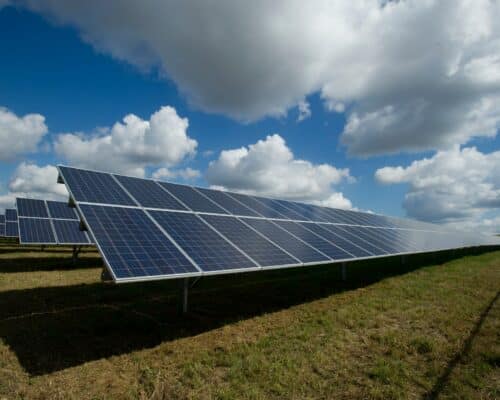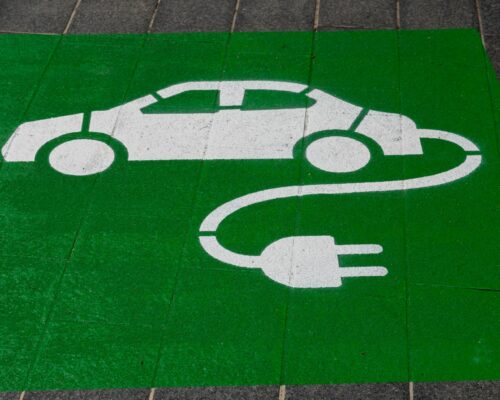Breakthrough Agenda 2023: Cooperation Key to Advancing Clean Technologies
04 October 2023 – by Viktor Tachev Comments (0)
Authored by the International Energy Agency (IEA), International Renewable Energy Agency (IRENA) and the UN Climate Change High-Level Champions, the Breakthrough Agenda Report 2023 examines the progress in the transition to clean technologies. The report recommends governments, businesses and civil society to strengthen collaboration across major emitting sectors.
Breakthrough Agenda 2023: The Suggestions For Clean Technologies in the Power and Hydrogen Sectors
After assessing the progress made in 2022, the Breakthrough Agenda Report 2023 concludes that while the situation is improving, current efforts towards clean technologies and sustainable solutions aren’t yet delivering the needed levels of investment. As a result, the deployment of solutions is insufficient to meet international climate goals.
According to the agencies, the main reason is the lack of collaboration between countries in sharing and developing new technologies.
“We must urgently overcome the systemic barriers across infrastructure, policy, and institutional capabilities,” explains Francesco La Camera, director-general of IRENA. “A well-targeted international cooperation can determine whether we meet our collective promise to secure a climate-safe existence for current and future generations,” he adds.
The report’s authors provide recommendations for international collaboration in reducing emissions over the next decade and mitigating the worst effects of climate change.
Among the findings of the report include:
Clean Energy Technologies Advance But Not Quickly Enough
The transition is accelerating, with electric vehicles and solar PV sectors making the most significant progress.
In 2023, EV sales will account for 18% of all global care sales. The report calls for 100% of sales to be electric cars and vans in leading markets by 2035 and globally by 2040.
The deployment of renewables in the power sector has increased to 83% of new electricity generating capacity. However, this rate needs to triple by 2030.
Investments in clean energy technologies are significantly outpacing those in fossil fuels. In 2022, they topped USD 1.3 trillion or 19% more than the previous year. The funds went to technologies like renewable energy, energy efficiency, energy storage, hydrogen and electrified transport.
However, the report notes that annual investments must triple by 2030 to meet the Paris Agreement’s goals.
With the current deployment rates, solar and wind power is set to double every 3.5 years. By 2030, it will reach 8 TW. However, net-zero scenarios estimate that the needed capacity by the decade’s end is 11 TW.
After the report’s release, Dr. Sultan Ahmed Al Jaber, COP28 president, called on countries to triple global renewable energy capacity to 11 TW. He also urged nations to double annual energy efficiency improvements and decarbonise the current energy system.
Hydrogen Emissions Remain High
According to the report’s authors, the hydrogen sector isn’t transitioning fast enough. The average emissions intensity of hydrogen production remains high and needs to drop by nearly 50% by 2030.
The main reason is that the focus remains on fossil fuel-produced hydrogen. Renewable and low-carbon hydrogen remains below 1% of global total hydrogen production. In 2022, it reached 0.7 Mt, compared with the 70-125 Mt/yr required by 2030 in a net-zero scenario. The authors note that little progress has been made on demand creation for low-carbon and renewable hydrogen.
The report’s authors note that renewable and low-carbon hydrogen remains more expensive than hydrogen from unabated fossil fuels.
The report states that, since March 2022, around USD 6.4 billion has been committed by major public financial institutions to support hydrogen development in developing countries, with India being the primary recipient. At the same time, it notes that USD 37-59 billion per year in additional private finance is needed until 2030 to bridge the overall investment gap in developing countries. International assistance and appropriate local policies are required to ease the funding-gathering process.
Financial Assistance to Developing Countries Is Growing But Not Quickly Enough
The report’s authors conclude that expanding financial assistance to developing countries has seen positive traction. Among the bright examples are the launch of JETPs in countries like Vietnam and Indonesia. Others include forming different financing initiatives to accelerate clean energy development worldwide and the development of innovative financial instruments to improve access to finance and stimulate the transition away from coal.
However, the financing remains insufficient to align with policies and stimulate the demand for clean technologies.
Among the recommended steps is an increase in the scale of public and private resources. MDBs must participate more actively to provide accessible financing to developing countries and de-risk investments.
The analysis calls for greater political commitment to strengthening forms of collaboration. It stresses the need for governments to align standards and policies, which can help mobilise investment and accelerate deployment.
Takeaways for Southeast Asian Countries
Southeast Asian countries are at the climate change front lines. At the same time, they don’t have the resources of developed nations for a quick energy transition.
However, with the proper focus and clearly defined priorities, they all have the means to accelerate their decarbonisation progress.
A Need For Policy Reforms and Strong Collaboration to Accelerate Clean Technology Deployment
According to the report, one of the main challenges for any large-scale infrastructure project is the long lead time. For solar PV, lead times can take between one and four years. For offshore wind, they can take between two and seven years. The construction itself is a relatively efficient and straightforward process. However, the biggest delays come from the planning and permitting stages.
For example, planning and permitting new transmission lines might take six to seven years in developed markets. For reference, the construction itself requires only two to three.
This is especially important for ASEAN countries. Collaboration and the sharing of best practices regarding the planning and permitting processes of clean energy projects can be vital in slashing the time to market, accelerating decarbonisation and ensuring stable and affordable power.
Furthermore, the IEA and IRENA urge governments and companies to significantly increase spending on clean technology demonstration projects and collaborate to bring new technologies to commercial-scale deployment.
Hydrogen Can Play a Part But Only If It’s Green
In 2022, the member countries of the International Partnership for Hydrogen and Fuel Cells in the Economy (IPHE) introduced the Hydrogen Production Analysis Task Force. It aims to develop standardisation methodologies for evaluating the emissions from different hydrogen production methods and carriers. This is a major step towards adopting hydrogen production emission intensity standards in regulations.
Japan, which aims to become the first hydrogen economy in the world, is among the IPHE’s member states. As a result, it has to adhere to the Hydrogen Trade Rules Task Force. It states: “For hydrogen to be a practical solution in the energy transition, it must be available in sufficient volumes, at an acceptable cost and with low or zero carbon emissions associated with its production and distribution.”
However, the Breakthrough Agenda 2023 report doesn’t identify Japan among the leaders in promoting low-carbon or green hydrogen technologies through targets or local and international efforts. The country is nowhere near the leaders with the most progressive green hydrogen policies. Furthermore, Japan isn’t among the key markets with low-carbon hydrogen production pilot projects. According to the IEA’s Energy Technology Perspectives 2023 report, currently, Japan has one of the highest prices for producing low-emission hydrogen using grid-connected electrolysers – 120% higher than China and 80% higher than the US.
Currently, Japan is developing just a single green hydrogen project. The green hydrogen production costs in Japan are USD 9/kg. This is way higher than Western Europe (USD 6/kg), the US (USD 5/kg) and China (USD 4/kg).
Among the reasons is that Japan’s priorities lay in fossil fuel-produced hydrogen. It also aims to export its expensive hydrogen technology with limited commercialisation and decarbonisation potential to Southeast Asia.
The IEA and IRENA warn that it is critical for all countries entering the hydrogen value chain, explicitly developing markets, to verify each project’s compliance with the defined international standards. Unless Southeast Asian countries can do that, they risk investing in hydrogen technologies that haven’t even proved their viability in Japan.
Developing the Power Grid in ASEAN
The report identifies the efforts of the Association of Southeast Asian Nations (ASEAN) Power Grid as a shining example in advancing cross-border interconnection. The association is applying European best practices in promoting the development of regional grids and electricity markets.
However, the region still needs to address existing technical and non-technical barriers. Among them are institutional challenges to harmonising standards and procedures, increasing the complexity of agreeing on cross-border electricity trade.
Addressing slow institutional processes will also help ease the long queues for connecting renewables to the grid. Southeast Asian countries that prioritise reducing the average lead times for green projects will better position themselves to attract foreign investors.
Ensuring a Just Energy Transition
The JETPs of Indonesia and Vietnam should strengthen their focus on protecting those vulnerable to the energy transition, like coal workers. Due to its coal-heavy power system, Indonesia, in particular, should prioritise setting clear strategies for job creation, economic restructuring and diversification activities.
After analysing the different coal phaseout scenarios in the Philippines, Indonesia, and Vietnam, the ILO has proposed a framework for cooperation among actors to ensure a fair and just energy transition.
Setting up local just transition task forces to partner and share experiences with global partners can be an effective measure. The US-India partnership on the just transition from coal is a bright example of sharing best practices.
“We need greater international collaboration along priority actions, especially to support developing and vulnerable countries, urges Dr. Sultan Ahmed Al Jaber, COP28 president. “It is imperative to expedite an energy transformation that is not only swift but also just, equitable, orderly and responsible,” he adds.
COP28 as a Stage For Strengthening Cooperation
The Breakthrough Agenda Report 2023 notes that since 2010, the average LCOE for new solar PV and onshore wind projects has fallen by 89% and 69%, respectively.
Considering their clean energy potential and growing economies, Southeast Asian countries are well-positioned to ensure sustainable, reliable and affordable power. For this to happen, however, governments must strengthen collaboration and work together to ease burdensome administrative procedures, introduce necessary standards and regulations and scale financial and technical assistance.
Those that remain fiscally constrained can seek assistance from developed markets like Japan. The latter should consider that all factors indicate that renewables are a better investment than its GX strategy technologies.
“No country can tackle the climate and energy challenges we face in isolation. Working together is the only way we can deliver a smooth transition for everyone.” warns Dr. Fatih Birol, the IEA’s executive director. “By delaying further, we are simply increasing the risks.”
At COP28, global leaders will have the perfect stage to demonstrate unity and their determination to ensure a liveable planet for the next generation.
by Viktor Tachev
Viktor has years of experience in financial markets and energy finance, working as a marketing consultant and content creator for leading institutions, NGOs, and tech startups. He is a regular contributor to knowledge hubs and magazines, tackling the latest trends in sustainability and green energy.
Read more




